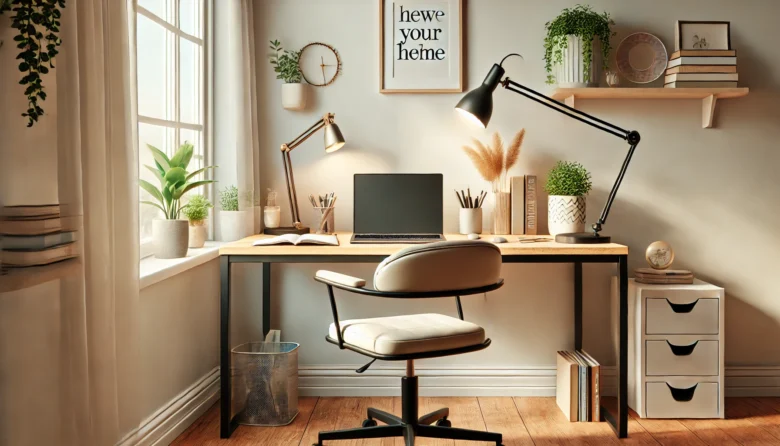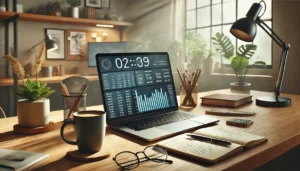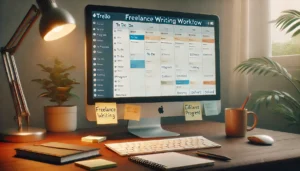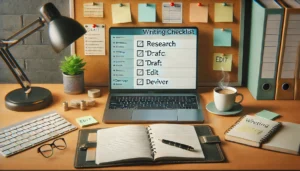Your workspace is more than just a place to write—it’s the environment where your ideas are born, shaped, and polished. As a freelance writer, the right setup can be the difference between distraction and flow, burnout and inspiration.
In this article, you’ll learn how to design a writing workspace that enhances productivity, supports creativity, and helps you stay focused day after day.
Why Your Environment Matters
Your physical surroundings impact your mental state. A cluttered, noisy, or poorly lit workspace can:
- Drain your energy
- Disrupt your focus
- Trigger procrastination
- Reduce the quality of your work
Meanwhile, a well-designed space helps you:
- Enter a “flow state” more easily
- Reduce distractions
- Feel motivated and professional
- Stay consistent with your writing schedule
Step 1: Choose the Right Location
Home Office (Ideal)
If you have a spare room, convert it into a dedicated writing space. This gives you:
- Privacy
- Fewer distractions
- A professional vibe
Shared or Multipurpose Space
No separate room? No problem. Use:
- A quiet corner with a desk and good lighting
- A folding screen or bookshelf as a room divider
- Headphones to create a “mental boundary” when writing
Coworking Spaces or Cafés
These can work if you:
- Need a change of scenery
- Thrive on background noise
- Don’t mind being around people
Just make sure the environment supports—not sabotages—your focus.
Step 2: Prioritize Ergonomics
You’ll spend hours in this space, so comfort is essential. Set up:
- A supportive chair (your back will thank you)
- Desk at elbow height to reduce shoulder strain
- Screen at eye level to avoid neck pain
- Keyboard and mouse positioned to reduce wrist fatigue
Bonus tip: Invest in a laptop stand or external monitor.
Step 3: Optimize Lighting
Good lighting boosts alertness and mood.
- Use natural light whenever possible (place your desk near a window)
- Add a desk lamp with adjustable brightness for early mornings or late nights
- Avoid harsh overhead lighting or screen glare
Pro tip: Soft, warm light is ideal for writing and deep work.
Step 4: Minimize Visual Clutter
A messy desk can create mental noise.
Keep your workspace tidy with:
- Minimal décor (plants, artwork, or quotes that inspire)
- Hidden cable organizers
- Drawer units or desktop trays for supplies
- A “clean desk” policy at the end of each day
Less clutter = more clarity.
Step 5: Set Up Focus Triggers
Train your brain to recognize when it’s time to write.
Use environmental cues like:
- A specific writing playlist or ambient noise
- A mug or candle you use only when writing
- Turning on a specific lamp when your session begins
These habits help you enter “writing mode” faster.
Step 6: Control the Noise
Noise tolerance varies, but writing requires some level of focus. Options include:
- Noise-canceling headphones
- White noise apps or instrumental music
- Earplugs for shared living spaces
- Soundproof panels if you’re in a noisy area
Test different audio environments to see what helps you get in the zone.
Step 7: Add Creative Touches
Make your space a place you want to be in.
Try:
- A vision board or list of writing goals
- Motivational quotes
- A bookshelf with your favorite writing resources
- A small plant for freshness and calm
Just don’t overdo it—avoid turning your desk into a museum.
Step 8: Keep Tools Within Reach
Your writing toolkit should be accessible and organized.
- Laptop/PC
- Planner or digital calendar
- Notebook for ideas
- Pens, highlighters, sticky notes
- Reference books or client briefs
Optional tech add-ons:
- Second monitor
- Tablet for research
- Smart speaker for timers or ambient sound
Step 9: Personalize Your Routine
Your workspace is part of your system. Pair it with rituals like:
- Starting your day with a short journaling session
- Taking regular standing/stretching breaks
- Having a specific drink during writing time (tea, coffee, etc.)
Rituals + environment = consistent productivity.
Final Thoughts: Your Writing Space, Your Creative Engine
You don’t need a Pinterest-perfect setup to write effectively. But you do need a space that makes you feel focused, comfortable, and inspired.
Start simple. Clean up your desk. Adjust your lighting. Add a plant. With a few intentional changes, your workspace can become your most powerful writing tool.



